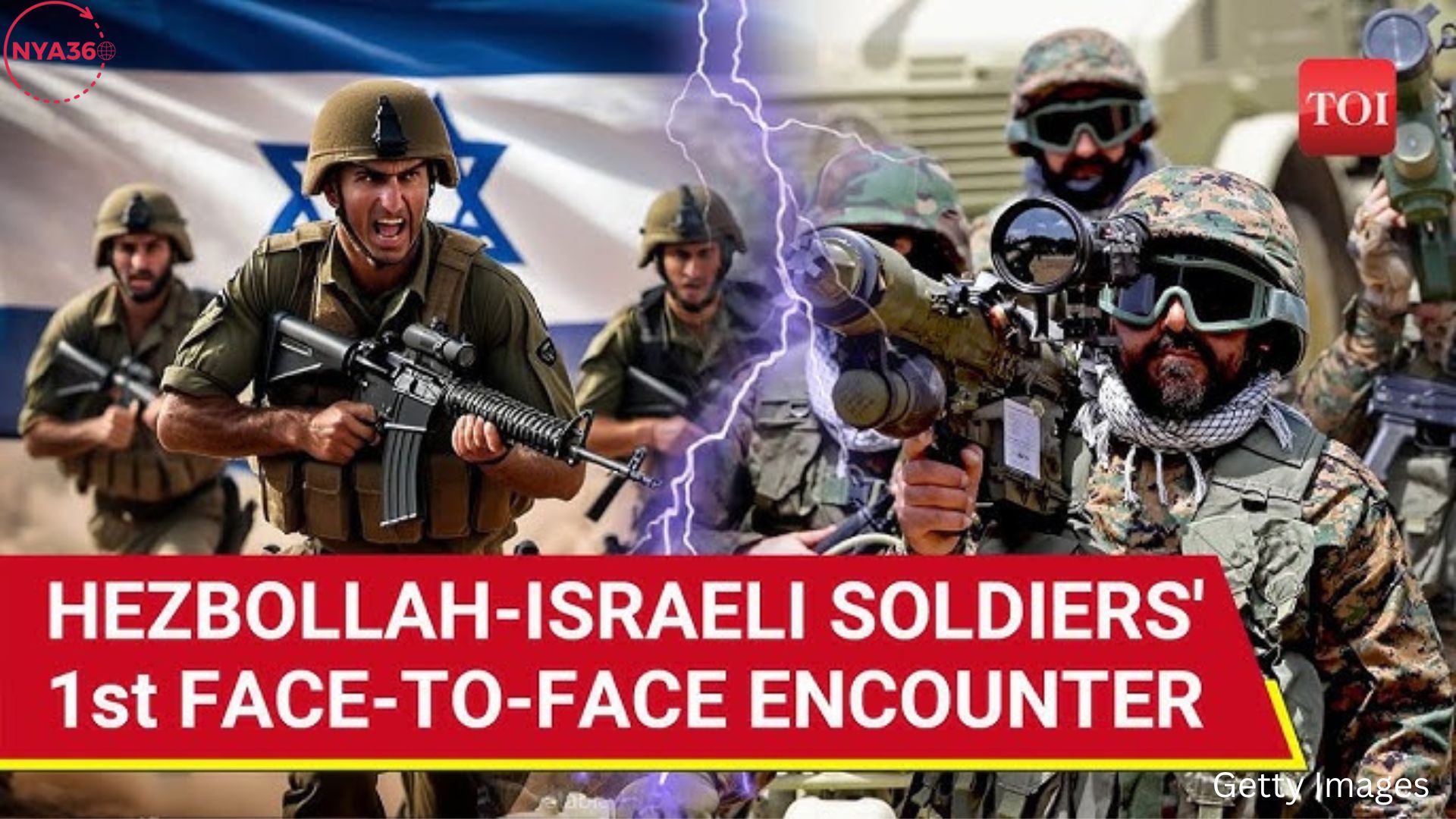Recent reports from Sky News Arabia say that over 10 Israeli soldiers have been killed and around 60 wounded in intense confrontations with Hezbollah militants in the dangerous region of southern Lebanon. The report indicates that Israeli soldiers have retreated from the village of Odaisseh in Lebanon, incurring significant fatalities due to a robust response from Hezbollah. This event signifies a notable advancement in the persistent struggle between Israel and Hezbollah, a formidable militant organization supported by Iran and active in Lebanon.
The confrontations allegedly commenced as Israeli forces sought to penetrate the village of Odaisseh, located near the Israeli border. Hezbollah, recognized for its significant regional influence and formidable military capabilities, retaliated with force, resulting in an intense confrontation between the two factions. Multiple sources indicate that the severity of the combat led to considerable casualties for Israeli forces. More than 10 troops were reportedly killed, with numerous others injured, prompting a rapid withdrawal by the Israeli forces.
Videos disseminated on social media allegedly depict fighting events, featuring Israeli helicopters rescuing injured soldiers. These photos provide insight into the critical nature of the fight, as Israeli soldiers endeavor to evacuate victims from the area under challenging circumstances. The evident withdrawal from Odaisseh highlights the difficulties Israel encounters in confronting Hezbollah forces, which have been extensively prepared for such engagements with Israel.
Although Hezbollah has not formally verified the specifics of the confrontations, the organization possesses a well-documented history of safeguarding Lebanese land against Israeli intrusions. Hezbollah has employed guerilla warfare techniques, including ambushes, anti-tank missiles, and underground tunnels, to counter Israeli forces in prior confrontations. The recent confrontation seems to align with this trend of hostilities, as Hezbollah exhibits its ability to cause considerable harm to the Israeli armed forces.

The conflict in southern Lebanon is situated within a larger framework of escalating tensions between Israel and Hezbollah. The area has historically been a locus of conflict, especially around the “Blue Line” boundary established by the United Nations between Lebanon and Israel. Both parties have consistently engaged in hostilities, resulting in multiple episodes that have disrupted the tenuous ceasefire over the years.
The ongoing skirmishes seem more severe than typical, indicating an increase in regional volatility. Southern Lebanon, particularly regions such as Odaisseh, holds strategic significance owing to its nearness to Israel. Hezbollah has strengthened its holdings in this region and perceives any Israeli intrusions as a direct threat to its territorial authority and legitimacy. Israel’s involvement in this region poses considerable military and political risks, as Hezbollah is a powerful military entity with considerable backing from Iran, positioning the group as a crucial actor in the Middle East’s geopolitical landscape.
The confrontations occur concurrently as Israel confronts numerous security concerns on several fronts. Alongside Hezbollah, Israel has been embroiled in persistent confrontations with Palestinian factions in the Gaza Strip and the West Bank, while also navigating the intricate relations with Syria to the north. This multifaceted security landscape strains Israel’s military capabilities and escalates the risks associated with any confrontation with Hezbollah.
Hezbollah’s participation in the conflict underscores the organization’s persistent influence in Lebanon and the broader Middle East. Established in the 1980s with Iranian support, Hezbollah initially arose as a resistance movement against the Israeli occupation of southern Lebanon. Over the years, it has evolved into a formidable political and military entity, capable of exerting substantial influence both within Lebanon and in the wider regional landscape.
The group’s military faction is notably formidable, having accumulated a stockpile of rockets, missiles, and sophisticated armaments, frequently provided by Iran. Hezbollah’s combatants are seasoned, having acquired substantial military expertise during the Syrian Civil War, where they aided the regime of Bashar al-Assad. This experience, along with the group’s established locations in southern Lebanon, renders Hezbollah a formidable adversary for any military force.

Hezbollah has always asserted itself as a protector of Lebanon’s sovereignty against Israeli aggression, a position that resonates with several Lebanese civilians, especially in the southern regions of the nation. The group’s connections to Iran have rendered it a major element in the extensive regional power conflict between Israel and Iran, with Lebanon frequently positioned amid this geopolitical contest.
In light of the significant casualties, Israeli forces have allegedly started airlifting deceased and injured soldiers from the combat zone. This action highlights the gravity of the situation, as the Israeli force confronts logistical difficulties in conveying casualties and the strategic consequences of a withdrawal. The evacuation serves as a poignant reminder of the human toll of the fight, as numerous young troops either perish or get severe injuries in the persistent carnage.
Israel’s military is recognized for its rapid and resolute reactions to assaults on its forces, and the withdrawal from Odaisseh may not signify the conclusion of this conflict. Israel is expected to reassess and deliberate its forthcoming actions meticulously. Retaliatory bombings or alternative military actions may ensue, especially if Israel aims to demonstrate strength and mitigate the perception of vulnerability in response to Hezbollah’s attacks.
Nonetheless, any escalation may jeopardize the region’s stability, potentially leading to a broader conflict. Hezbollah, possessing a network of combatants and sophisticated armaments, might respond in kind, resulting in a prolonged and violent conflict. Both parties recognize the repercussions of escalation; nonetheless, neither is inclined to concede without securing a degree of tactical advantage.
🚨🇮🇱🇱🇧 ISRAEL is now evacuating dead & wounded soldiers after disastrous clashes with Hezbollah. pic.twitter.com/AiI8aAQLQG
— Jackson Hinkle 🇺🇸 (@jacksonhinklle) October 2, 2024
The recent confrontations between Israel and Hezbollah extend beyond a localized conflict; they possess significant ramifications for the entire Middle East region. The discord between Israel and Hezbollah is intricately linked to the broader geopolitical rivalry between Israel and Iran. Hezbollah’s substantial backing from Tehran has its actions frequently perceived as integral to Iran’s overarching aim to reduce Israeli dominance in the area.
This confrontation occurs concurrently with substantial political transformations in the greater Middle East, including reconciliation attempts between Saudi Arabia and Iran, and varying U.S. engagement in regional conflicts. The results of the recent confrontations may affect these dynamics, as Israel and Hezbollah assess the boundaries of one another’s determination.
The conflicts in southern Lebanon underscore the persistent instability in the region. The confrontation between Israel and Hezbollah has resurfaced, with reports indicating the deaths of over 10 Israeli soldiers and numerous injuries. As both parties evaluate their subsequent actions, the likelihood of escalation persists, and the global community observes intently to determine whether the crisis will devolve into a broader conflict or be mitigated by diplomatic efforts.
Follow us on social media: Instagram, Threads & Twitter X @nya360_ YouTube & Facebook @nya360.





